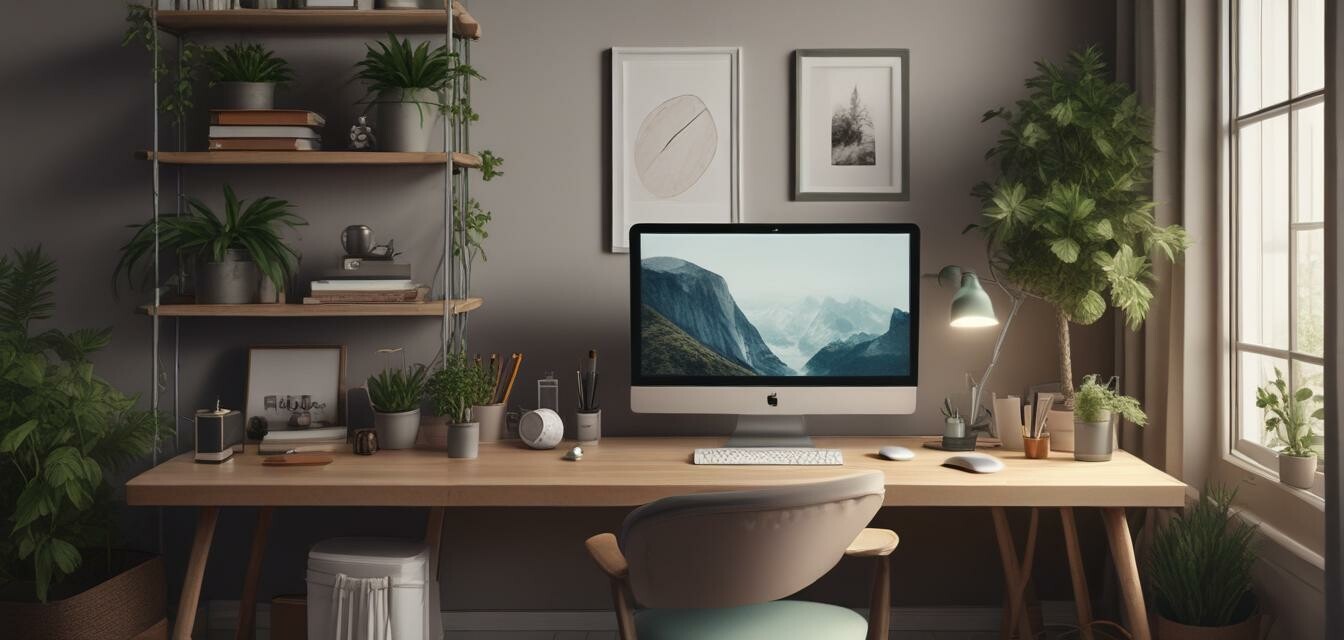
How to create a Zen home office environment
Key Takeaways
- Embrace minimalism to reduce distractions.
- Incorporate nature through plants and natural light.
- Opt for a calming color palette to foster a peaceful atmosphere.
- Utilize ergonomic furniture for better posture and comfort.
- Create personalized spaces that resonate with your style.
Creating a zen home office environment can enhance your focus and reduce stress during your work hours. A well-thought-out workspace that reflects a calm and serene atmosphere can make a significant difference in your productivity. In this article, we will explore various methods to transform your home office into a peaceful sanctuary.
Understanding Zen principles
To create a zen home office, it's important to understand the core principles of Zen philosophy, which focuses on simplicity, tranquility, and the connection with nature. Here are some key aspects to consider:
- Simplicity: Remove clutter and unnecessary items from your workspace.
- Nature: Integrate natural elements like plants and natural light.
- Balance: Ensure a harmonious arrangement of furniture and accessories.
- Mindfulness: Create a space that encourages calmness and focus.
Design elements for a Zen workspace
Here are some crucial design elements to consider when creating your zen home office:
| Design Element | Description |
|---|---|
| Color Palette | Use soft, muted colors such as earth tones or pastel shades to promote tranquility. |
| Natural Light | Position your workspace near windows to allow natural light to illuminate the area. |
| Furniture Arrangement | Ensure your desk and chair are ergonomically friendly for optimal posture and comfort. |
| Decorative Elements | Incorporate calming decor items like artwork, soft textiles, and minimalistic designs. |
| Plants | Include indoor plants to improve air quality and add a touch of nature. |
Essential accessories for a calming office
Below, we’ve listed some accessories that can significantly enhance the zen atmosphere of your home office:
- Desk lamps for soft lighting.
- Noise-canceling headphones for maintaining focus.
- Essential oil diffusers for aromatherapy.
- Comfortable ergonomic chairs to support proper posture.
- Adjustable desks to promote movement throughout the day.
Implementing a minimalist approach
Embracing minimalism in your workspace can help reduce distractions and promote clarity. Here are some tips to achieve a minimalist office:
Tips for a minimalist home office
- Limit the number of items on your desk to essentials only.
- Use digital tools to minimize paper clutter.
- Invest in multifunctional furniture that saves space.
- Keep cables and wires organized and out of sight.
- Regularly declutter your surroundings to maintain a clean environment.
Incorporating personal touches
Your home office should not only be functional but should also reflect your personality. Personal touches can create a sense of belonging. Consider the following:
- Add artwork that inspires you.
- Include personal photographs or mementos.
- Use a color scheme that resonates with your personal style.
- Incorporate inspiring quotes or affirmations.
Maintaining a zen atmosphere
To keep your workspace zen, consider establishing a routine that promotes relaxation during work hours. Below are some methods you can implement:
- Take regular breaks to stretch and re-focus.
- Practice mindfulness techniques to calm your mind.
- Use calming background music to enhance focus.
- Engage in light exercises or yoga stretches at your desk.
Conclusion
Creating a zen home office environment is all about fostering a space that promotes peace, focus, and productivity. By implementing the design elements and accessories that align with zen principles, you can significantly enhance both your work efficiency and overall well-being. Don't forget to explore more setup inspiration for a cozy and functional workspace.
Pros
- Enhances focus and productivity.
- Reduces stress levels and promotes relaxation.
- Creates an aesthetically pleasing workspace.
- Improves overall well-being during work hours.
Cons
- Initial setup may require investment in furniture and accessories.
- Requires continuous effort to maintain a clean and organized space.